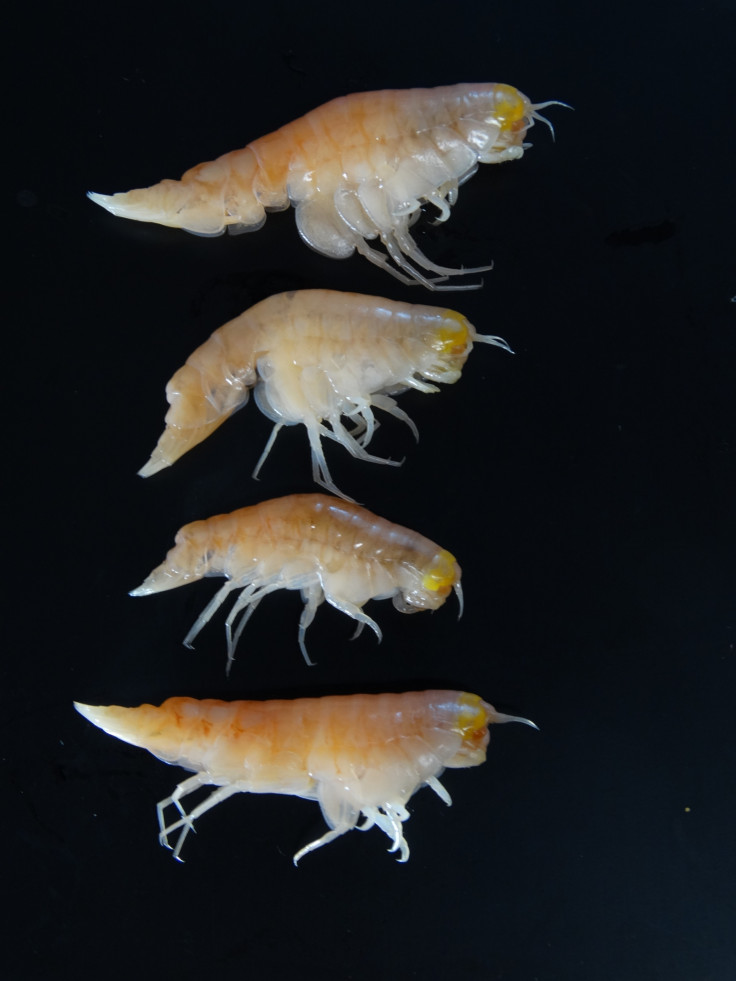Deepest ocean trenches full of toxins outlawed in 1970s
Polluting chemicals used as flame retardants are concentrating in the most remote parts of the ocean.
Extremely high levels of human-made pollutants have been found in the deepest ocean trenches on Earth, accumulating in marine life at levels comparable to those in the rivers draining some of the most intensely industrial areas of China and Japan.
Tiny crustaceans living at depths of up to 10,000m were found to contain high levels of chemicals banned in the 1970s, finds a study published in the journal Nature Ecology and Evolution. These chemicals, known as persistent organic pollutants (POPs), include PCBs, or polychlorinated biphenyls, used in dielectric fluids, and PBDEs, or polybrominated diphenyl ethers, used in flame retardants.
Incredible depths
Deep sea landers with baited traps were used to catch amphipod crustaceans on a range of deep-sea expeditions over the years. They were collected by landers sent down the Mariana Trench near Japan, which stretches to about 11,000m at its deepest measured point, and the Kermadec Trench near New Zealand, which is just over 10,000m at its deepest.
The researchers measured several species of crustaceans at depths of between 7,200 and 10,000m in Kermadec, and between 7,800 and 10,200m in the Mariana Trench. All of the crustaceans had PCBs and PBDEs concentrated in their fat layers, but there was no particular relationship between depth of the crustacean and the concentration of the POPs.
The POPs found in the crustaceans are endocrine disruptors, and have been shown to damage several species' reproductive health. Over multiple generations the expected effect of POPs are for populations to decrease.
"We're finding pollutants in an ecosystem we don't understand," study author Alan Jamieson of Newcastle University told IBTimes UK. "But the point is that they're there, they're detectable in everything we looked at, and they're at extremely high levels."
Crustaceans you really wouldn't want to eat
Making direct comparisons between shallow-water crustaceans, on which scientists have 100 years of data, and their largely mysterious deep-sea counterparts is difficult, he added, as so little is known about their biology.
As a ballpark figure, the scientists calculated that the deep-sea crustaceans in the Mariana Trench had PCB levels more than 50 times higher than those found in crabs from paddy fields by the Liaohe, one of the most polluted rivers in China. The Suruga Bay by Japan was the only site in the north-west Pacific with PCBs at comparable levels.
"A human being has done something on land to release these – they don't occur in natural world," said Jamieson.
One-way travel
However, it's not known how exactly these chemicals get down to such remote parts of the world, far from human habitation. The researchers suggest that plastics in the ocean act to concentrate the POPs. These chemicals are more attracted to plastics than to water, and so the plastics act to mop up the POPs before disintegrating or being eaten by marine life such as whales and fish. When the animals die, their bodies sink to the sea floor.
"Once in deep sea, there's nowhere else for it to go. When it goes into a trench and gets funnelled down into bottom, you can only add more to it, you can't take any way.
"Shape of the trench acts like a funnel and collects all the material. Normally that's good for the ecosystem, as it collects lots of food. But the problem is we've contaminated the food supply."

PCBs and PBDEs were the only two pollutants the researchers looked for in the deep trenches, but there were other signs of pollutants of human origin, such as higher than expected levels of mercury.
Ecotoxicologist Katherine Dafforn of the University of New South Wales in Australia said in an accompanying article in the journal that the results were disturbing.
"Concentrations of PCBs and PCBEs in these tiny crustaceans were higher than baseline levels and 50 times greater than in crabs from a highly polluted river system in China," wrote ecotoxicologist Katherine Dafforn of the University of New South Wales in Australia in an accompanying article in the journal.
"This is significant since the hadal trenches are many miles away from any industrial source and suggests that the delivery of these pollutants occurs over long distances despite regulation since the 1970s."
© Copyright IBTimes 2025. All rights reserved.






















